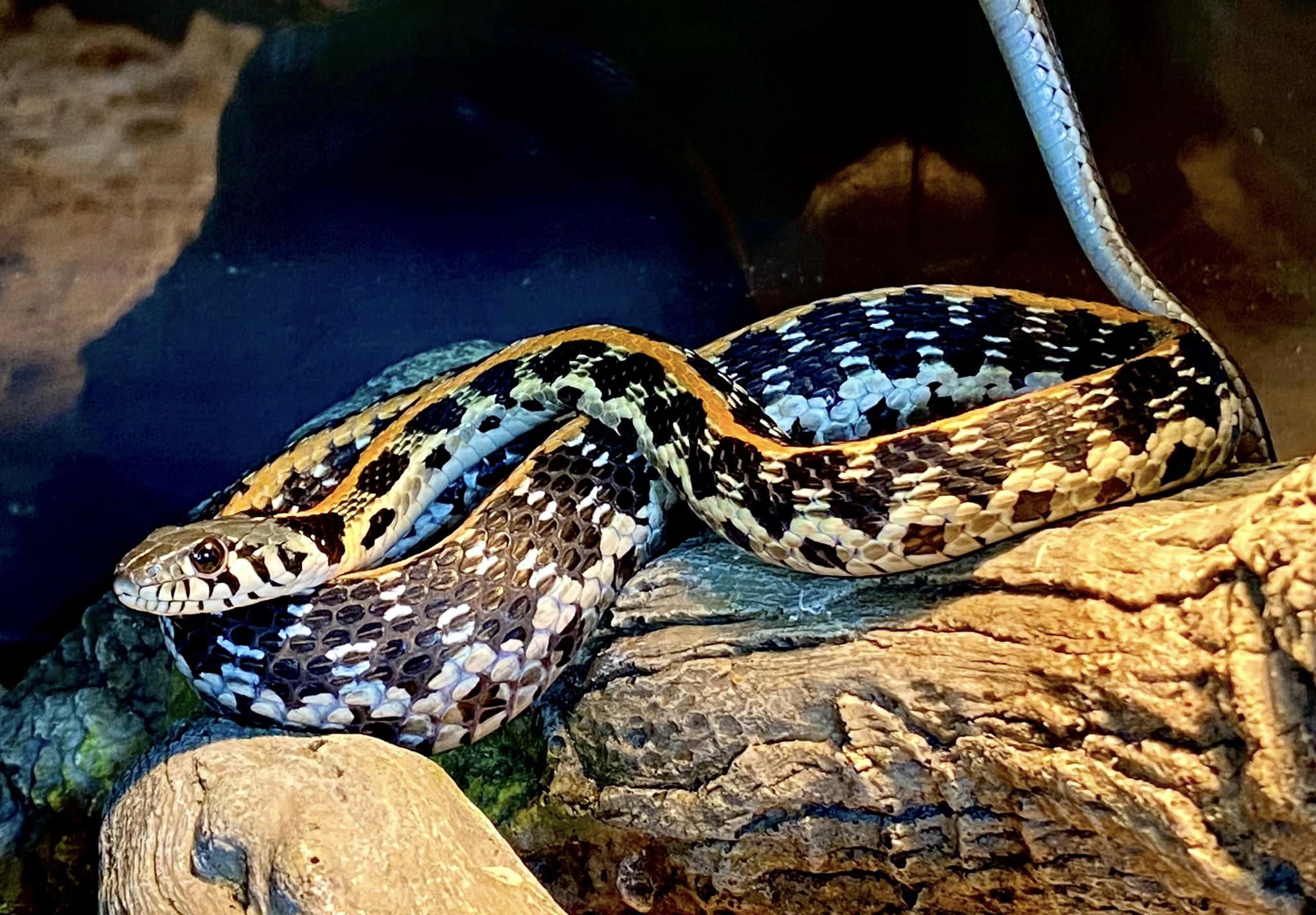Housing:
Garter snakes are relatively small snakes, so you can keep them in a glass or plastic terrarium. A 20-gallon tank is sufficient for one adult of most species of garters. You’ll need more space if you plan to keep multiple snakes, or any of the larger varieties, such as the Mexicans (T. eques). Ensure the enclosure has a secure lid to prevent escapes. You may want to watch these videos for more info: Basic Care Guide, Tools and Supplies, and Enclosures for juvenile Garters
Substrate:
Use a suitable substrate that allows for burrowing and holds humidity well for subadults and adults. We prefer aspen, for various reasons, but watch your humidity. If you need something that holds humidity better, you may want to switch to something like “jungle mix”. For babies and juveniles, we prefer paper towels. Like all babies, they eat and poop…a lot! Keeping their space clean and confirming “normal” bowel movements are critical, at this age. They also have a tendency to drag their food through their substrate and can easily choke, if loose substrate is used.
Temperature and Humidity:
Garter snakes are ectothermic (cold-blooded), so you need to provide a temperature gradient within the enclosure. The warm side should be around 75-85°F (24-29°C), while the cool side can be around 70-75°F (21-24°C). Use heat lamps, heating pads, or ceramic heat emitters to achieve this. Maintain a humidity level of around 40-60%. Many people keep their garters far too warm…keep that in mind.
Lighting:
Garter snakes don’t have high UVB requirements, but providing a low-level UVB light can help with their overall well-being. Garters are diurnal and will typically be active all day long, so give them plenty of light.
Feeding:
Garter snakes are carnivorous and primarily eat fish, amphibians, and sometimes rodents. We raise baby garters on a mixed diet, so that the new owners have options. We find that it’s an easier transition for both the owner and the animal if the animal was raised on more than one type of food. We mix chopped pinkies, chicken heart, tilapia and when needed, night crawlers. Once you know which food item yours prefers, you can transition them to whatever you want later, by using scenting techniques. It’s also important to realize that we are trying to train garter snakes to eat in a very unnatural way. Very little of what they eat naturally, is stationary. They are natural hunters and are visually stimulated by movement. If your snake isn’t eating, keep this in mind, and you will have much better success. We have videos on this topic that we will post.
Feeding Schedule:
For the first couple of months, we aim to feed them every 2-3 days. From 2-10 months, approximately every 4 days. 10 months to subadult every 5 days and then adults are usually every 6-7 days. These are rough guidelines. In fact, it’s sometimes good to let them go an extra few days (once they are past the fragile period).
Water:
Provide a shallow water dish large enough for the snake to soak in. In our opinion, this is an area that is greatly underestimated, with respect to how important it is. We are confident that many health issues that people experience with their garters is related to poor water quality. Whether it’s city water or well water, it quite often has chemicals and living organisms in it. We strictly use bottled spring water and have had excellent results. We won’t even use our purified well water because we don’t trust it. It’s a small price to pay, for healthier garter.
Handling:
Garter snakes are generally docile and can be handled, but each snake’s temperament can vary. Handle your snake gently and avoid sudden movements. Start with short sessions and gradually increase the time to allow the snake to get used to being handled. Giving your garters regular swimming sessions can have great payoffs too. Check out this video
Enrichment:
Garter snakes are active and curious snakes. Provide hiding spots, branches, and other climbing structures to keep them mentally stimulated. Change up their enclosure every month or two, as well. The more for them to explore, the happier they will be. Don’t underestimate how much they love to climb…just make sure that your enclosure lid is escape proof. Check out this video
Health and Hygiene:
Regularly clean the enclosure to maintain hygiene. Monitor your snake’s behavior, appetite, and appearance. If you notice any signs of illness, such as lethargy, difficulty shedding, or respiratory issues, consult a reptile veterinarian.
Veterinary Care:
Find a veterinarian experienced with reptiles and schedule regular check-ups to ensure your snake’s health and well-being. I’ll be honest, it’s not easy to find someone with experience with garter snakes. Ask for referrals from your social network and speak with multiple vets, before choosing the one that you want to work with.
Remember that caring for any pet, including garter snakes, requires dedication and responsibility. Research thoroughly and ensure you can provide a proper and suitable environment before bringing a snake into your home. We’re always here to help!

